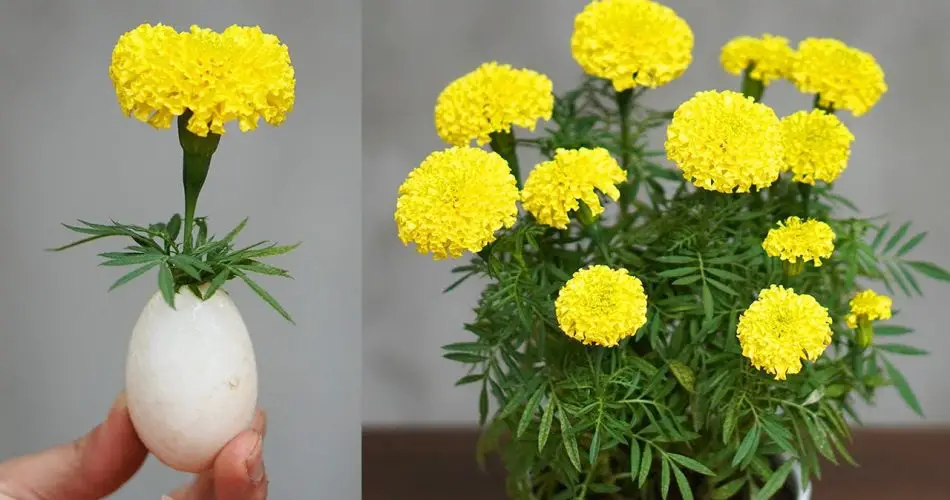
1. Selection of the Ideal Pot
The foundation of a successful marigold pot begins with the choice of container. Opt for a pot that features ample drainage holes to avert the risk of water accumulation. Since marigolds thrive in well-aerated soil, ensuring that water can freely exit the pot is crucial to prevent root diseases. Consider a pot size that accommodates growth and allows for the expansion of roots, creating a stable environment for the marigolds to mature.
2. Soil Quality is Paramount
The vitality of your marigolds is significantly influenced by the soil quality. Employ a blend of high-quality potting soil and organic compost to create a nutrient-dense environment. This combination ensures the soil is rich in essential nutrients and retains moisture without becoming waterlogged, offering an optimal setting for marigold roots to develop.
3. Ensuring Adequate Sunlight
Marigolds are sun-loving plants that require extensive exposure to sunlight to thrive. Position your pot in an area that receives at least six hours of direct sunlight daily. This exposure is critical for the development of strong, healthy plants and the maximization of flower production, leading to a more vibrant display.
4. Proper Planting Technique
The depth at which marigold seedlings are planted can greatly influence their growth. Planting them at the correct depth, as specified on the seed packet, ensures that they have enough room to establish a robust root system. Be cautious not to plant them too deep or too shallow, as either can hinder their development.
5. Watering Regimen
Marigolds require a balanced watering approach to thrive. Water the plants deeply but infrequently, allowing the soil to dry slightly between waterings. This method encourages the development of deep root systems and prevents issues such as root rot, which is common in overly moist conditions.
6. Fertilization Strategy
Although marigolds are not heavy feeders, periodic fertilization can enhance their growth and flowering. Apply a balanced, water-soluble fertilizer every two to four weeks during the peak growth period. Avoid over-fertilization, as it can lead to lush foliage at the expense of blooms.
7. Encouraging Bushier Growth
Pinching back the tips of marigold plants when they reach a height of 4-6 inches promotes a denser, bushier appearance. This technique stimulates the plant to branch out, resulting in a fuller pot with more areas for blooms to develop.
8. Deadheading for Continuous Blooms
Regular removal of faded or spent flowers, known as deadheading, is vital for prolonged blooming. This practice not only maintains the aesthetic appeal of your pot but also encourages the plant to focus its energy on producing new buds and flowers.
9. Pest Management
Vigilance against pests such as aphids and spider mites is necessary to protect your marigolds. Employ non-toxic solutions like insecticidal soap or a gentle spray of water to manage infestations, ensuring your plants remain healthy and unblemished.
10. Appreciating Your Garden’s Beauty
Amid the care and maintenance, remember to take a moment to enjoy the beauty and vibrancy of your marigolds. The satisfaction derived from tending to your garden and witnessing the fruition of your efforts is immeasurable.
By following these comprehensive tips, you are well-equipped to cultivate an exquisite pot of marigolds, characterized by lush foliage and an abundance of cheerful blooms. This endeavor, while requiring dedication, promises a rewarding and colorful addition to your garden or outdoor space. Happy gardening!
